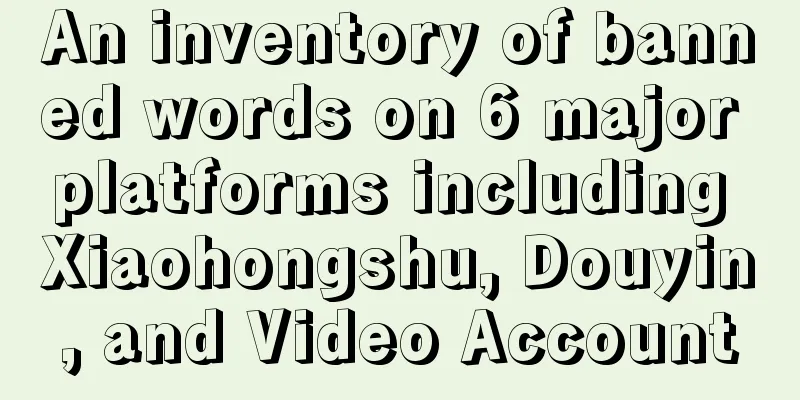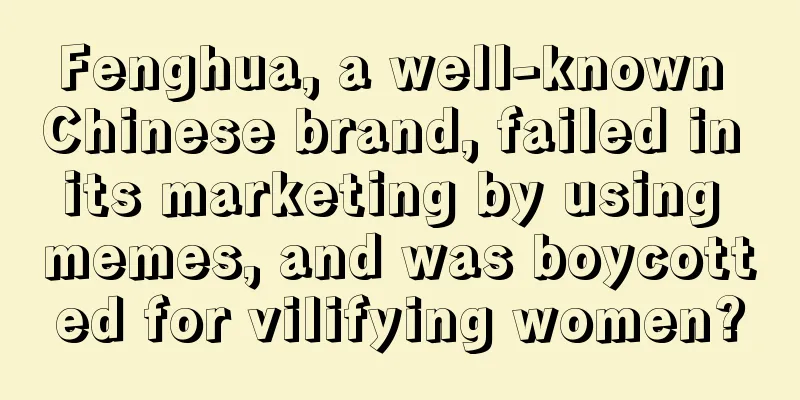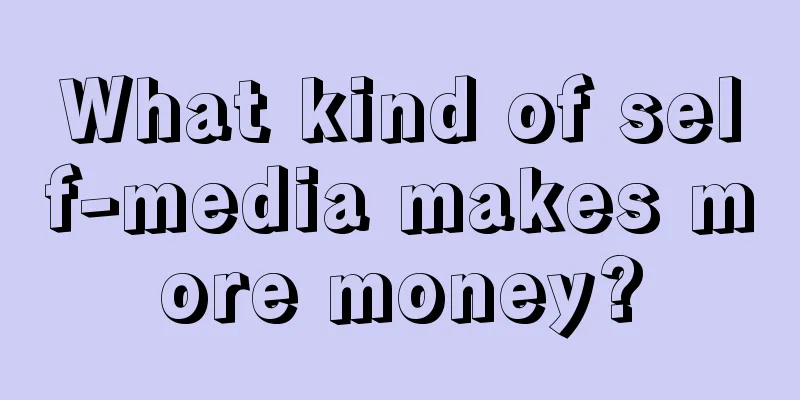If you understand Hello Kitty, you will also understand Pop Mart

When talking about Chinese companies going overseas, we may think of companies like DJI and Huawei that combine hard technology with outstanding manufacturing capabilities. In fact, in recent times, there are two other brands that have gained fame in domestic and overseas markets through IPO cultural exports - one is Game Science, which produced "Black Myth Wukong", and the other is Pop Mart, which is really popular in Southeast Asia. On October 22, Pop Mart released an overview of its third-quarter performance: the overall operating income growth rate in Q3 2024 reached 120%-125%, of which the growth rate in the mainland was 55%-60%, and the year-on-year growth rate of revenue in Hong Kong, Macao, Taiwan and overseas reached an astonishing 440%-445%. Figure: Pop Mart's semi-annual performance growth rate, source: Choice Financial Client Compared with the financial performance, which is obvious at first glance, the story of trendy toys and IP is a little obscure to the public. This has also caused Pop Mart to be accompanied by controversy for a long time. The core of the controversy is nothing more than whether the so-called trendy toys and IP have a clear growth business model - after all, in the past half century, there have been too many stories claiming to be the "second Disney", but there has never been a case that can compare with it. In fact, all business narratives can find a fitting reference system in history. In our comparative research perspective, the current Pop Mart is far from Disney, but it is similar to another IP brand that is familiar to Chinese people born in the 1980s - Hello Kitty! and the Sanrio company behind it. Sanrio from Japan, with its product structure and business model, licensing business and theme park business, light or abandonment of film and television adaptation strategy, as well as its overseas strategic orientation, etc., are very much like Pop Mart’s "lessons learned". In a sense, if you understand the past of Hello Kitty, you will understand the future of Pop Mart. 01 Sanrio’s “Three Rise”The name Sanrio may be unfamiliar to the Chinese public, but Sanrio's IPs My Melody, Coolmind, and Scamp are all well-known cartoon characters. My Melody and Coolmind frequently appear on the screen, and Scamp has become one of the most popular co-branded characters. Of course, what really made Sanrio a household name is still the big-headed kitten sitting sideways that was created in the 1970s: Hello Kitty! In the statistics of the world's most profitable single IP, Hello Kitty's total revenue to date has exceeded 86 billion US dollars, second only to Pokémon and higher than Winnie the Pooh, Mickey Mouse & Donald Duck and Star Wars. Thanks to the long-lasting performance of Hello Kitty, Sanrio has also secured its place in the top 20 of global IP licensing. According to License-Global's "2024 Global Top Licensors Ranking", Sanrio ranked 14th, and even rose two places compared with the same period last year despite the absence of new phenomenal IPs. Figure: Top 20 of the 2024 Global Top Licensors, source: License-Global, edited by Jinduan The companies ranked ahead of Sanrio either have relatively short IP cycles (such as One Piece) that are still at their peak, or have frequently reproduced their IPs in film, television, and gaming in recent years (such as Harry Potter, Barbie, etc.). It is difficult to find an evergreen IP like Hello Kitty that has emerged solely through relying on licensing business. The development history of Hello Kitty has not been smooth sailing, but it has still been able to ride the waves and move forward amidst the ups and downs. This is inseparable from Sanrio's constant change and innovation during the three low periods of Kitty Cat. This also implies the core essence of building an evergreen IP: semantic core, environmental fit and management fit. 1. The rise of Kitty: the value of languageIn the book "Deconstructing the Secret of Hello Kitty", author Ken Belson tells a very interesting story: Pop idols and sports stars have mastered the art of interviewing, and entrepreneurs are no exception, but some questions would really embarrass Shintaro Tsuji (founder of Sanrio and father of Hello Kitty). For example, "Why is Hello Kitty so popular?" It's like God knows why children like Snoopy and Mickey. Shintaro Tsuji also doesn't understand why a little cat with a big head and a small body is worth more than 5 billion US dollars. Therefore, whenever he encountered this challenging problem, Shintaro Tsuji would bring out the theory of "social communication". Kitty's harmless and cute image embodies a social magnet that can eliminate friction and promote excellence, so it will become the first choice for gifts. Anyone with a discerning eye knows that without commercial operations, a cute image alone is not enough to support an IP valued at hundreds of millions. Shintaro Tsuji naturally understands this truth as well. After all, among the 500 characters created by Sanrio, only Kitty has truly achieved success. But Shintaro Tsuji did not lie. In his opinion, "social communication" was the key factor in Hello Kitty's turnaround. When the first Hello Kitty craze came in 1977, the original artist Yuko Shimizu had chosen to return to her family. Two years later, the Hello Kitty craze calmed down. The art student Yuko Yamaguchi, who replaced Yuko Shimizu and Setsuko Yonekubo (Yuko Shimizu's assistant), did not like the disproportionate design, so the design team originally planned to abandon the original design of Hello Kitty. Shintaro Tsuji stepped forward at this time. Although he was not optimistic about Hello Kitty at the beginning, he still believed that Hello Kitty had become a symbol of friendship and there was no reason to give up the language. For this reason, Shintaro Tsuji held an internal competition for the concept design of a new Hello Kitty and designed a new scene for Hello Kitty. In order to coordinate the design language and understand the market, although Japanese society relaxed gender segregation among workers during the bubble period, the labor market was still dominated by men at that time. However, Sanrio hired more than 70% of its employees as women to pursue a language unique to "little girls." According to Yuko Yamaguchi's recollection, it was not until the 1990s that Japanese women gradually became fashion leaders, readily accepting the fashion expressions of little girls and childishness, and seeing them as symbols of independence and power. They regarded the use of Sanrio products as a silent code and formed a tacit understanding. This is the power of the language system, and it is also the core logic behind Hello Kitty's first breakthrough and rise. 2. Overseas recovery: heroes are made by the timesAlthough Sanrio and Hello Kitty had already achieved absolute dominance in shaping trends in some parts of Japan in the 1970s and 1980s, giving Hello Kitty a "second life" still required Shintaro Tsuji's higher-dimensional vision. At that time, Japan was at the tail end of its economic bubble, and it was also the decade of Japan's overseas expansion. The number of government investment agreements and various tax agreements (Japan's ODA) increased significantly. The government paid for Japanese companies to go to backward countries to carry out infrastructure construction and popularize industrial products. The state helped companies bear the initial development risks of backward markets and share the objective investment returns in the future. Until ten years after the Plaza Accord was signed, Japan became the world's largest ODA donor and made a lot of corresponding foreign exchange capital. From the formation of the trade surplus in 1981 to the turn from positive to negative in 2010, Japan's cumulative import and export surplus exceeded 270 trillion yen. Figure: Japan's import and export trade difference from 1954 to date, source: Choice Financial Client, compiled by Jinduan Even during the bubble period when confidence was inflated, Shintaro Tsuji still recognized the importance of cultural foothold: "Japan earned unprecedented amounts of money during the bubble economy era, but it could not win the hearts of the people in the world." Therefore, Shintaro Tsuji decided to use the huge sums of money he earned to win people's hearts. As early as 1974, he established a branch in the United States and got involved in film production and distribution. The first animated film was released in 1975, and the original character licensing business was officially launched the following year. Basically, in the 1970s, Sanrio had already established major businesses such as "brand direct sales", "overseas markets", "content production", and "image licensing". However, until the beginning of this century, Sanrio's overseas business did not receive strong feedback at the data level. In 2001, Sanrio's total sales reached 114 billion yen, and overseas markets accounted for only 13% (for comparison, in 2024H, Pop Mart's overseas sales accounted for 9.6%). The real rise of the overseas business was the so-called "non-manufacturing production process". Similar to Fast Retailing (Uniqlo), in the late 1990s, my country's light manufacturing industry rose, and the quality and price of OEM products "nourish" a large number of companies that had early plans to go overseas. Sanrio was no exception: it was precisely because of the trade surplus in the past 20 years that a large number of Japanese companies had accumulated available monetary capital, and using money to exchange for scale reduced the difficulty of global supply. At the same time, direct licensing has also crossed a lot of tariff barriers. From the exterior design of large industrial machines to Parker pens, they are full of Sanrio elements. But among them, none of the products are produced by Sanrio, but they can still get profit sharing. Nowadays, Sanrio stores are also full of various multinational cosmetics, suitcases and other products without manufacturing processes. At the same time, Sanrio caught up with the implementation of Japan's "ACGN culture" (comics, animation, games, novels) diplomatic strategy at the turn of the century. A large number of character prototypes and potential settings borrowed from Western cultural prototypes (such as the appearance of anime characters). The construction of cultural channels also paved the way for Sanrio's future external exports. Currently, Sanrio's overseas revenue accounts for nearly 40%. This 40% of revenue is inseparable from the expansion of Japan's cultural industry overseas and the rise of East Asian manufacturing industry, and is also inseparable from Sanrio's own keen awareness of the opportunity for industrial change - heroes are made by the times. 3. New business model revolution: management shapes the futureSimilar to the situation faced by most consumer brands, Sanrio has also been significantly impacted by the epidemic in recent years, with its overall sales in 2021 rapidly declining by nearly 30%. However, Sanrio's recovery speed is much faster than its peers. Just one year later, Sanrio's revenue in Q4 2021 was 14.8 billion yen, and its operating profit quickly turned from loss to loss to 1.75 billion yen, making up for the losses during the epidemic period. Figure: Sanrio's operating income in the 2020-2021 quarter, source: Futu Niu Niu, compiled by Jinduan The reason is that since Tomokari Tsuji took over as CEO, he abandoned the traditional Japanese company's overseas market center control and hired a large number of external management talents. This is rare in traditional family-owned Japanese companies. According to a 2014 survey, the talent localization rate of Japanese companies in China is 50%, while the same data shows that the localization rate in Europe and other regions is 64%, and the United States is 81%. Tomo Tsuji's cutting-edge management ideas and localization strategies worked wonders. Putting aside the illusory talent management system, the localized talents in overseas markets provided Sanrio with two great ideas during the epidemic cycle: reducing directly-operated stores in the United States and increasing e-commerce investment in China. The former cleverly helped Sanrio avoid the risk of inflationary pressure and circumvent the possible deficit situation caused by the decline in revenue growth in the North American market. The latter has stepped into the bonus period of mobile Internet. Sanrio's partners include large platform companies such as Alibaba. Through leading e-commerce partners, Sanrio's sales in mainland China reached 6.13 billion yen in the first half of this year, a year-on-year increase of 30.0%, becoming the new engine driving Hello Kitty's third rise. Under good management, the capital market has been generous in rewarding Sanrio. Since 2018, Sanrio's market value has more than quintupled. This is no mean feat for a company in its sixties that has been listed for 40 years, issuing top IPs for 50 years, and established for nearly 60 years. Figure: Sanrio's market value performance from 2018 to 2024, source: Futu NiuNiu 02 Pop Mart’s Future MapLet’s get back to the issue that the Chinese public and investors are most concerned about: Does Pop Mart have the ability to grow into an evergreen IP? After reviewing the growth history of Sanrio IP, we can roughly sort out the three core factors of evergreen IP: whether the IP has a unique language system, whether the external environment is in line with the development of the enterprise, and whether the management ability of the enterprise has growth potential. In our opinion, Pop Mart already has at least two advantages: the IP has a unique language system, and the external environment and humanistic views are also in line with the development trend of trendy toys. In terms of language system : good designs always have similarities. In the book "Trendy Play: Happiness is Justice", an interesting story behind the design of Pop Mart's popular IP - Molly was published. Wang Ning hoped that Kenny Wong (Molly's designer) would make the character's mouth corners a little upturned to make her more cute, or a little downturned to make her more stubborn, but both were rejected by Kenny Wong. Kenny believes that when users are happy, they will be happy when they see her, and when they are upset, they will be upset when they see her. Emotional empathy is both the language of the character and the meaning of the character. This is quite similar to the earliest version of Kitty Cat designed by Yuko Shimizu, which had no mouth. In an interview with Matrix Partners, Wang Ning also emphasized his understanding of the IP language system. In his opinion, if you cover a brand's logo, you won't know who it is, and it may not be a real brand. Although Lego is a toy company, its greatness lies in the birth of a language and system. Everyone who cooperates with Lego must rewrite it in Lego's language. This is a brand with a sense of culture. This coincides with Shintaro Tsuji's determination to never give up Kitty and turn it into friendship, cuteness, and even independent spiritual culture in the later period. Therefore, Pop Mart has the cognition and ability to build IP and language system like Sanrio, which is the prerequisite for the birth of a hit IP. In terms of the external environment : the current domestic market is 80% similar to the economy of Japan at that time. The rapid development cycle has accumulated a large amount of original assets, which is enough to create a brand with more horizontal competitiveness. But there are also differences: The good news is that our country's domestic market development is more independent and has a relatively larger independent single market. Therefore, the good condition is that our domestic growth is still sufficient, and there is no relatively severe and urgent demand for Sanrio to go overseas as it did at that time. Still taking advantage of the characteristics of the Japanese market at the end of the last century, Hideo Miura mentioned the concept of a "three-low society" in the preface to "The Fifth Consumer Age", which seems to represent the relative decline of the consumer market. However, Kenichi Ohmae also came up with the theory of "The Economics of One Person" through studying the humanistic consumption market at the turn of the century: networking, declining birthrates and aging populations will promote the consumption ceiling of a single economy, and value-satisfaction consumption will not shrink. The derivative changes in social structure mean that self-satisfaction consumption is likely to be one of the opportunities for the next generation. What worries me is that the so-called trendy toys and IPs themselves do not have productivity value, nor are they cultural accessories. Compared with Japan's "ACGN culture" diplomatic strategy, the influence of our foreign cultural exports in the past 30 years is not as great as that of Japan in the early 21st century. Therefore, there are still many barriers to cultural exports. Although Pop Mart's overseas sales growth rate is very fast in its financial report, the main growth rate still comes from the Pan-East Asian cultural circle such as Southeast Asia, Hong Kong, Macao, Taiwan and South Korea. The European and American markets only account for 23% of the overseas market and about 7% of the overall revenue. Europe and the United States are not only the largest single consumer markets overseas, but also the main battlefield for the export of cultural values. Perhaps Pop Mart can also learn from Sanrio’s experience, not sticking to self-operation or operating a single business at home and abroad, and breaking through cultural barriers through a low-cost licensing business cooperation model. In our opinion, the intrinsic value and external environment of Pop Mart at this stage can demonstrate its long-term value. Whether it can grow into a long-lasting enterprise like Sanrio depends on its unproven management capabilities in the future. Management is a capability that takes a long period of time to incubate across generations. For the young Pop Mart at this stage, there is still a long way to go. Just as Japan transformed the scary and ugly Godzilla into the cute and lovable Hello Kitty through Hello Kitty, we also expect that Pop Mart can reshape the trend and add the cute Molly image to the cold image of a manufacturing powerhouse, thereby demonstrating China's unique cultural strength. This article is written based on public information and is only for information exchange purposes. It does not constitute any investment advice |
<<: Growth Talk: North Star Indicator
>>: In the AI-native era, ByteDance wants to replicate its third growth miracle
Recommend
How to give valuable suggestions when writing data analysis reports
When writing a data analysis report, making valuab...
Can an individual run an overseas warehouse on eBay? How to run an overseas warehouse on eBay?
As a cross-border e-commerce platform, eBay has de...
Damn! Why are these brands better at choosing targets than I am! | Monthly Case
In 2023, there was a wave of co-branding, and co-b...
Is it easy to be an account manager at Alibaba International Station? What are the conditions for entry?
Everyone knows about Alibaba International Station...
How to operate community content? Tiantian Fund has the answer!
In community operations, content production is a n...
How long does it take for Amazon to remove users’ privileges if their order defect rate exceeds 1%? How to deal with the order defect rate?
Amazon sellers all know that the order defect rate...
Brand image, be practical!
In the second half of digital operations, no one c...
How can a new Shopee store gain traffic? Is there any method?
Now, more and more merchants are opening stores on...
How to operate cross-border e-commerce during the epidemic? How to do it well?
With the rapid development of cross-border e-comme...
Local Life 3.0: Douyin for food delivery, Meituan for video watching
Recently, the homepage of Meituan APP has been tes...
What exactly is the “bottom-level logic” and “top-level thinking” that others talk about?
Exploring the "underlying logic" and &qu...
Catering is trapped by low prices, and group buying destroys the experience?
"Group buying special offers, compete for a g...
Brand No. 1: Vacancy Competition Series 009
In the fierce battlefield of commercial competitio...
Will Xiaohongshu change its direction again in the second half of 2024? How to sell goods in the e-commerce era!
As a platform integrating e-commerce and social me...
Fenghua, a well-known Chinese brand, failed in its marketing by using memes, and was boycotted for vilifying women?
A few days ago, the old domestic brand Fenghua cau...









